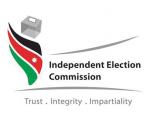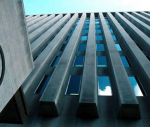You are here
Local banking sector ‘most secure’ at pan-Arab level
By JT - Sep 30,2018 - Last updated at Sep 30,2018
AMMAN — The volume of combined assets of the Jordanian banking sector reached $70.4 billion by the end of the second quarter of 2018, registering a 1.7 per cent growth compared to the end of 2017, Secretary General of the Union of Arab Banks Wissam Fattouh said on Saturday.
Such figures make the Jordanian banking sector the most secure in the Arab region, Fattouh added in a statement that was cited by the Jordan News Agency, Petra.
Based on an analytical study by the union, deposits amounted to $47.1 billion, marking a 1.5 per cent increase compared to the same period last year, he added.
As for credit facilities granted to the public and private sectors, the secretary general said that they reached some $48.2 billion, registering a 4.2 per cent growth, compared to the end of 2017.
Regarding sources of deposits, the private sector’s constituted some 92 per cent of the total volume by the end of June, 2018, while 68 per cent of loans were granted to resident private sector, Fattouh pointed out.
The banks’ combined capital, reserves and allocations totalled $10.6 billion by the end of the January-June period of 2018, marking a slight decrease by 0.8 per cent, when compared with the end of 2017, he added.
The assets of the Jordanian banking sector constituted some 171 per cent of the volume of the nominal gross domestic product (GDP) by the end of 2017, while deposits amounted to 115 per cent of the GDP. Loans, moreover, formed 114 per cent of the GDP, which “reflects the relative importance of the sector,” according to the banker.
The Jordanian banking sector ranked 13th among Arab peers in terms of assets volume, amounting to 2 per cent of the total assets of the Arab banking sector, he noted.
Three Jordanian banks have entered the list of the 1,000 largest banks in the world, namely, the Arab Bank, the Housing Bank for Trade and Finance and the Bank of Jordan.
The total basic capital of these three banks, which run assets valued at some $63.2 billion, reaches around $6.8 billion, the secretary general said.
The Kingdom’s banking sector is the most secure in the Arab region, where capital adequacy in Jordan amounted to 18.5 and 17.8 per cent in 2016 and 2017, respectively, Fattouh said, attributing the minor decline to the increase in credit volume granted to the private sector, which carries relatively high risks.
Arab and foreign ownerships of the capital of Jordanian banks by the end of 2017 reached 49 per cent, which is a high percentage in the region due to the absence of any restrictions to bank ownership in Jordan, he added.
At a pan-Arab level, the combined assets of the Arab banking sectors stood at $3.39 trillion by the end of June, 2018, up by 1.6 per cent when compared to the end of 2017, and now constitutes 140 per cent of the pan-Arab GDP, Fattouh noted.
The combined deposits of the Arab banking sector reached some $2.14 trillion, constituting 87 per cent of the volume of the Arab economy.
Also on Saturday, some banks operating in the Kingdom preempted a decision by the Central Bank of Jordan (CBJ) and acquainted lenders with raising the interest rate by 0.25 per cent on their housing loans, Petra reported.
Observers expect the CBJ to raise the interest rate on the Jordanian dinar tools, following a decision by the US Federal Advisory Council to raise interest rate on the dollar by 25 basis points to 2.25 per cent.
Some five months ago, banks raised interest rates between 0.5 and 1.5 per cent after five consecutive hikes by the CBJ.
Not all banks are expected to follow suit after the CBJ’s anticipated move for reasons related to competiveness, on one hand, and alleviating pressure on the shoulder of borrowers, on the other, Petra added.
Related Articles
AMMAN — The volume of combined assets of the Jordanian banking sector totalled $79.5 billion by the end of the third quarter of 2020, accord
AMMAN — The volume of combined assets of the Jordanian banking sector totalled JD50.9 billion in 2018, showing an increase of 3.7 per cent c
AMMAN — The Kingdom's total public debt increased by the end of January to some JD27.4 billion, constituting 95.6 per cent of the gross dome
















